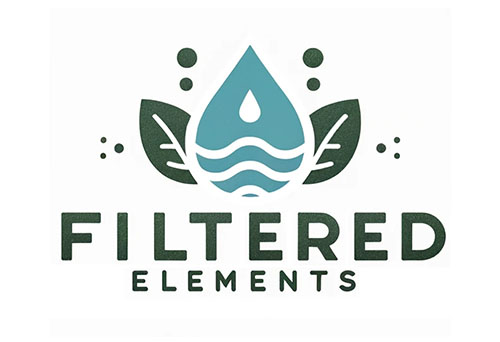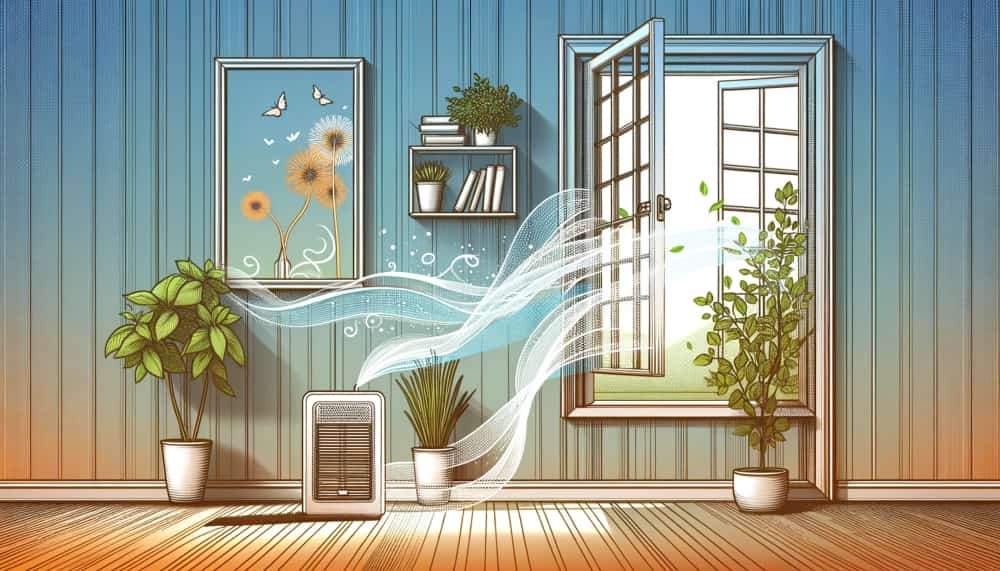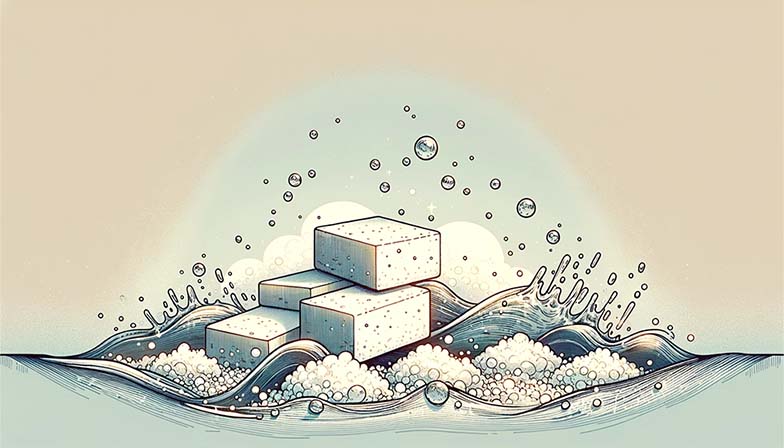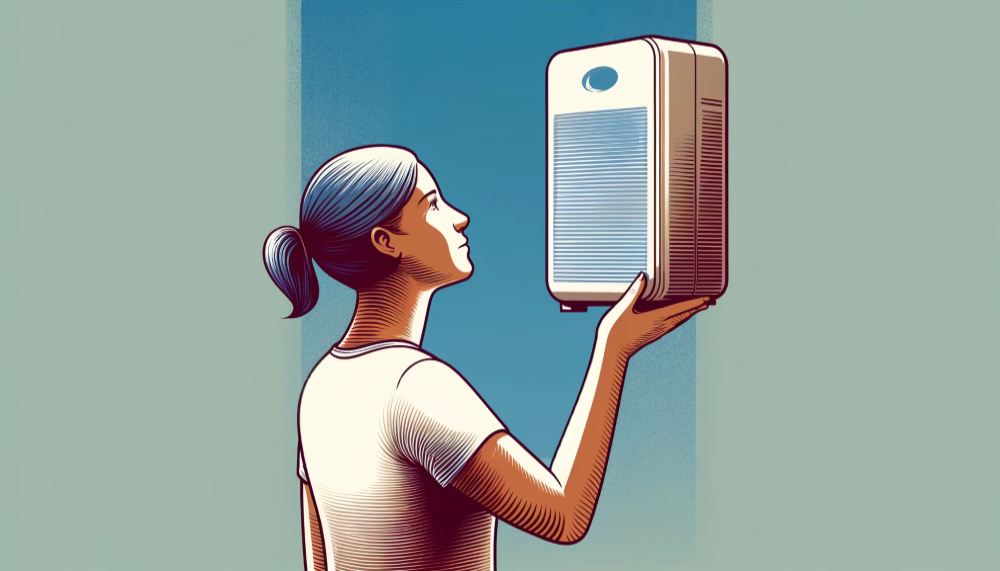Have you ever stepped outside after a thunderstorm and noticed how refreshingly clean the air smells? That invigorating freshness can be attributed to negative ions – invisible molecules that play a vital role in air quality.
In this article, we’ll dive into the world of negative ions, exploring what they are, how they impact the air we breathe, and their potential benefits for our health and well-being. We’ll also discuss air ionizers – devices designed to generate negative ions indoors – and compare them to other air purification methods.
By understanding the science behind negative ions and their effects on our environment, you’ll gain valuable insights into how to create a healthier, more rejuvenating atmosphere in your home or workplace.
So, let’s uncover the secrets of these tiny, charged molecules and discover how they can enhance the quality of the air that surrounds us every day.
What are Negative Ions?
Negative ions are molecules in the air that have gained an extra electron, giving them a negative electrical charge. In nature, negative ions are abundantly created around waterfalls, beaches, and during thunderstorms when water molecules break apart and electrons attach to oxygen molecules in the air.
The presence of negative ions is often associated with fresh, clean air. In contrast, positive ions, which have lost an electron, are linked to stuffier air and tend to be more prevalent indoors and in polluted environments.
Negative ions form naturally in several ways:
- The force of water from waterfalls, crashing waves, and rain storms causes water molecules to split and release electrons which attach to air molecules, forming negative ions.
- Sunlight and lightning during thunderstorms create negative ions through ionization of air molecules.
- Natural radioactive decay of elements in soil and rocks also releases energy that generates negative ions in the surrounding air.
Modern indoor environments often have lower concentrations of negative ions compared to nature due to:
- Increased air pollution from chemicals, dust, and smoke which depletes negative ions.
- Electronic devices like TVs, computers and cell phones that emit positive ions which cancel out negative ions.
- Stale, unventilated indoor air that lacks air flow and circulation which would normally help create negative ions.
In a nutshell, promoting air circulation and reducing pollutants can help maintain higher levels of beneficial negative ions in our living environments.
How Negative Ions Impact Air Quality

When negative ions are present in high concentrations in the air, they can have a purifying effect by attracting and neutralizing positively charged particles such as dust, pollen, bacteria, and other pollutants.
The way negative ions clean the air is through a process called agglomeration. The negative charge of the ions causes them to attach to tiny particles in the air that carry a positive charge. As more of these particles clump together with the negative ions, they become heavier. Rather than remaining airborne, the enlarged particles are more likely to fall to the ground or adhere to nearby surfaces like walls and furniture. This removes the pollutants from the air so they are no longer circulating and available to be inhaled.
Another way negative ions may improve air quality is by potentially reducing certain airborne microorganisms. Some studies have indicated that high levels of negative ions can inhibit the growth of bacteria and other pathogens, although more research is needed in this area. By minimizing the concentration of these microbes in the air, negative ions may help create a cleaner, healthier indoor environment with fewer irritants.
The efficacy of negative ionization can be impacted by factors like the size of the space, the concentration of pollutants, and the level of ventilation. Large rooms with significant sources of contaminants may overwhelm the air cleaning capacity of negative ions.
Additionally, some ionizers that generate negative ions may produce ozone as a byproduct. While ozone in the upper atmosphere is beneficial, ozone at ground level is a lung irritant and can exacerbate respiratory issues for some people. Therefore, it’s crucial to use ionizers that have been tested and certified to emit little to no ozone if air purification is the goal. Other air cleaning methods, such as HEPA filtration, may be more consistently effective and pose fewer potential risks.
Potential Health Benefits of Negative Ions

In recent years, there has been growing interest in the potential health benefits of negative ions. While research is still ongoing, several studies suggest that exposure to negative ions may offer a range of advantages for both physical and mental health.
- Improved Mood and Reduced Depression: Some studies suggest that exposure to negative ions may help improve mood and alleviate symptoms of depression. Negative ions are thought to increase levels of serotonin, a neurotransmitter that helps regulate mood. One study found that negative ion treatment was as effective as bright light therapy in reducing symptoms of seasonal affective disorder (SAD).
- Enhanced Cognitive Performance: Research indicates negative ions may boost mental energy and cognitive abilities like concentration and memory. Negative ions appear to increase oxygen flow to the brain, although more studies are needed on the mechanisms involved.
- Better Sleep Quality: Breathing air rich in negative ions may support more restful sleep by reducing symptoms of allergies and respiratory irritation that can disrupt sleep. Anecdotal reports suggest negative ion exposure leads to sounder sleep and feeling more refreshed upon waking.
- Reduced Stress Levels: Negative ions are associated with natural, relaxing environments like beaches and waterfalls. Some evidence supports that negative ion exposure can help lower stress by regulating mood-influencing chemicals and shifting the nervous system into a more relaxed state. More research is needed on the direct stress-reducing effects.
- Boosted Immune Function: A couple small studies have found that negative ions may stimulate the immune system by supporting the production of protective chemicals and the activity of certain immune cells. However, much more rigorous research is required to confirm negative ions meaningfully boost immunity.
While preliminary research on negative ions is intriguing, it’s important to note most studies so far have been small with limitations in their methodologies. More large, well-designed trials are needed before concluding negative ions provide definite measurable health benefits.
However, spending time in natural environments rich in negative ions, such as beaches and forests, appears to provide a mood and energy boost for many people. As research continues, a clearer picture of the therapeutic potential of negative ions will likely emerge.
In the meantime, seeking out these natural sources of negative ions may offer a safe and accessible way to experience their possible benefits for overall well-being.
Air Ionizers

Negative ion generators, also known as air ionizers, are devices that electrically charge air molecules to produce negative ions. These devices come in various forms including stand-alone ionizers, ionizing fans, and air purifiers with built-in ionization. Some also consider himalayan salt lamps as a type of natural negative ion generator.
The main purpose of a negative ion generator is to clean and freshen indoor air by using an electric charge to generate negative ions. The negative ions attract positively charged particles in the air such as dust, pollen, smoke, and other allergens or irritants. As the negative ions attach to these particles, they become heavier and fall out of the air, no longer circulating.
However, there are some potential drawbacks and concerns with negative ionizers to be aware of. One issue is that some ionizers may produce ozone as a byproduct. While ozone high in the atmosphere helps shield us from UV rays, ozone at ground level is a lung irritant and can worsen asthma, allergies and other respiratory issues. It’s important to look for ionizers certified as low or no ozone producing.
Another consideration is how negative ionizers compare to other air cleaning technologies like HEPA filtration. HEPA air purifiers force air through a dense fiber filter to physically trap particles. They do not emit any ions or ozone. Many experts consider HEPA filtration more reliable and effective than ionization alone for removing airborne contaminants.
Some air purifiers now combine both a HEPA filter and an ionizer for a multi-stage approach. The ionizer can help the HEPA filter work more efficiently by pre-clumping particles. But the HEPA filter remains the primary cleaning mechanism and can trap particles whether they are charged or not, while the ionizer cannot remove particles from the air by itself.
When shopping for an air ionizer, it’s wise to compare it to HEPA purifiers and consider a model utilizing both technologies. Be sure to check out our roundup of the best air purifiers to help select a model that is certified as ozone-safe and comes from a reputable brand.
Final Thoughts
Understanding the role of negative ions in air quality and their potential health benefits is an important step towards creating a healthier indoor environment. While more research is needed to fully grasp the extent of their impact, it’s clear that negative ions can contribute to fresher, cleaner air by reducing airborne pollutants.
Whether you seek out natural sources of negative ions or consider investing in an air ionizer, remember to prioritize devices that are ozone-safe and consider incorporating other proven air purification methods, such as HEPA filtration, for a comprehensive approach.
By taking a proactive stance on the quality of the air you breathe, you can create a more invigorating and health-promoting atmosphere in your living spaces.
As we continue to uncover the secrets of these tiny, charged molecules, one thing remains certain: the pursuit of clean, refreshing air is a worthwhile endeavor for us all.




